How to make a beautiful and stylish pond on the site with your own hands?
A small beautiful pond is an excellent addition to the landscape decor for a suburban area. Any body of water enlivens the landscape, makes it more natural and harmonious, and the pond is also very easy to make using simple materials. This work is within the power of any homeowner, and very soon your site will receive a wonderful decoration. How to create a beautiful pond on the site do it yourself?
Content:
- History and traditions of creating decorative ponds
- Design and main options for placing a pond
- What to build a pond from?
- How to make a pond with your own hands from film: step by step instructions
- How can you decorate a pond?
- Flora and fauna of the pond
- Pond styles
History and traditions of creating decorative ponds
The tradition of creating small decorative ponds on the site came to us from the east. In hot Muslim countries, water has always been highly prized, and a small man-made pool was a sign of a well-to-do luxury home.
The bowls were decorated with marble, decorated with gilding or silver.
Later, this tradition came to the European continent, and each country can find its own traditions of arranging ponds and pools.
Pond in different countries:
- Artificial reservoirs also existed in Japan: in the traditions of this country, the arrangement of a garden in which all elements are present, including water. The most commonly used tsukubai is an artificial container with water, and most often it flowed down man-made streams.
- English gardens and parks have their own tradition: they are characterized by strict geometric shapes and straight lines without unnecessary decor, and this trend was reflected in the design of reservoirs. In a spacious English garden, you definitely need to find a place for a large square or rectangular pond with a minimum amount of vegetation along the banks.
- France is characterized by various options for landscape design, but a common feature can be distinguished: any body of water should have clearly delineated banks. Its edges most often rise slightly above the ground, this will keep the water within the established limits and avoid dirt. The shape and design of ponds can be very different.
What is the best pond on the site? This can only be decided by the owner himself: you can use the Eastern tradition by creating a small rock garden with a peaceful harmonious reservoir. Or you can show your imagination and make a large-scale reservoir with lush vegetation along the banks and rich decoration.
Design and main options for placing a pond
The first question that will have to be addressed is where to locate the pond? The dimensions and placement depend on the size of the site itself and the personal wishes of the owner of the house, but there are several important mandatory requirements:
- The pond should not be constantly exposed to the sun. Firstly, in the hot summer season, a shallow pond can simply dry out, and secondly, an excess of sunlight leads to the blooming of water. If you do not care for the reservoir, over time it can turn into a swamp.
- The opposite situation is also undesirable: the water surface should not be constantly in the shade. The recommended normal period of illumination is 7-8 hours a day. Of course, it is not always possible to find the ideal place, but it is better to follow the general recommendations.
- You shouldn't have a pond near trees... Falling foliage pollutes the water, and during autumn leaf fall, its surface can be completely covered with leaves.
- The water surface should be visible: you can place a pond near the house or build a beautiful gazebo next to it. There is another option: a pond is dug in the far corner of the yard, benches can be placed nearby and a recreation area can be equipped.
- In shape, two main options are possible: a regular geometric figure or natural smooth outlines. The choice depends on the general style of the site design: if you prefer the European English tradition, you can use the first option, and if you are closer to the magic of the east, the second. At the same time, there can be many design options: the walls of the pond and its banks are shaped in different ways, you can experiment with a wide variety of vegetation.
What to build a pond from?
The next important question is the material for the construction of the pond. The choice will depend on financial capabilities and on how capital and durable the structure you want to get.
There are several basic options:
- Reinforced concrete pond bowl. This is the strongest and most durable structure that can last for many years. In fact, this is an analogue of a small pool: it will be possible to walk freely along the bottom, the walls will withstand any loads. However, such a pond is very expensive: you will need to purchase a large amount of materials and hire specialists to pour the bowl. In addition, in the future, such a structure will be extremely difficult to dismantle: it will take a lot of time and will require a lot of labor.
- Small pond made of PVC film. This is the cheapest and most affordable solution to build such a pond in a few days on any site. A pit is dug, at the bottom of which a film is placed, its edges are pressed with tiles, stone or other materials. It should be borne in mind that the film is a fragile material: it can be damaged by any sharp object, for example, a tree root or sharp pebbles. Most often, such a pond is small and does not last long.
- A pond, the banks of which are made of butyl rubber. It is a very elastic material, with the help of which you can give the shores of the pond any shape and make its shape as natural as possible. Rubber has a fairly high strength, it is much more durable than film. It is not too expensive, so the pond does not require large expenses.
- Plastic containers and baths. This option will create a small pond near the entrance to the house. It is very easy to install, and the banks can be decorated with any materials according to your own taste. It is a nice and very inexpensive garden decoration.
How to make a pond with your own hands from film: step by step instructions
A film pond is the most affordable and quite aesthetic solution. The material does not allow water to pass through, and with proper arrangement, the pond will keep its shape perfectly. Wide design options allow you to implement any design ideas and turn an artificial reservoir into one of the main and most noticeable garden decorations.
The first stage of work is the preparation of the site for the future pond.
It should be flat and free of all greenery and turf. If the site is uneven, the curvature must be corrected. The outlines of the future reservoir are outlined with ropes and pegs or with a rubber hose. It is advisable to begin with simply laying the film on the ground in order to evaluate from all sides how the finished reservoir will look.
The further sequence of work is as follows:
- Excavation.The pit must be prepared in accordance with the planned depth and shape of the pond. If it is multi-level, the pit should have walls of the planned slope. The bottom needs to be leveled, pebbles, plant roots and other objects that can damage the film must be removed from it. It is advisable to carry out earthwork from the edges to the center of the pit, and immediately remove the collected soil from the site.
- The walls of the pit and its bottom are compacted, after which a buffer layer of sand is poured into it. Its thickness depends on the thickness of the film itself: the smaller it is, the more sand will be required to protect it.
- Laying the film. It is placed in a pit with a margin: the edges should protrude at least 30 cm beyond the edges of the reservoir and it should not be stretched. The edges of the film are pressed with large stones, concrete blocks or other material that will be used to decorate the banks. it can also be covered with soil. The film should be fixed as securely as possible: the durability of the pond depends on it.
- Bottom decoration. Most often, a smooth cobblestone is used for this: it is laid out along the bottom and along the banks of the pond. The stone should not have sharp corners and protrusions so that it does not damage the film.
- When the preparatory work is completed, you can fill in water and plant the plants. Water is poured from a hose in a thin stream so as not to damage the film with too much pressure. At first, it can be cloudy, then its own biological system will build up in the pond, and the water will become clear and clean. A pond with a bottom made of plastic film will be a simple and profitable solution that everyone can use on their site.
How can you decorate a pond?
An ordinary pond itself is an interesting garden decoration, but its design can be varied. First of all, the shores of the reservoir open up space for creativity. It is necessary to choose a material that will reliably keep water within the established boundaries and at the same time will have an aesthetic appearance.
The most common solution for decorating banks is stones - from small pebbles to large boulders.
Boulders will be appropriate near a large body of water: large stones can be placed in the water so that they rise above the surface. Pebbles and gravel are poured along the banks to protect them from erosion. For ponds of strict geometric outlines, you can choose polished stone or granite tiles: it will allow you to create smooth and neat banks that correspond to the general style of the reservoir and the site itself.
If financial possibilities permit, the pond can be decorated with additional decorative elements. These include:
- Underwater lighting. It will look great at night: soft lighting looks mysterious, the atmosphere will bewitch and set in a romantic mood. Mini LED floodlights are used for underwater lighting. It is important to carry out the installation correctly so that the electrical system is reliably protected from water.
- Overhead lights. LED floodlights consume a minimum of energy and can create interesting lighting effects when decorating banks. In general, lighting in this part of the site is necessary: it will allow you to admire the beauty of the artificial reservoir and the vegetation around it, not only during the day, but also at night.
- Bridges. It is a decorative element for large artificial reservoirs, which helps to go to the other side and admire the beauty of the water surface. Decking can be used as a covering for the bridge, which will not collapse even at high humidity.
- Mini fountains. The creation of a fountain requires the installation of a pump: the height of the water jet depends on its power and location. The design of a fountain can be very different: you can order an individual sculptural composition, or you can get by with simpler and more inexpensive options.
Flora and fauna of the pond
Even the smallest body of water is a full-fledged mini-ecosystem, and without vegetation and fish, it will look ugly. There are many types of aquatic plants that will help revitalize the pond, make it more natural and aesthetically pleasing.
The most common plant in ponds is duckweed: it is ubiquitous in both natural and artificial reservoirs.
However, you will have to fight with it: greens can gradually tighten the entire surface of the pond, turning it into a swamp. Any body of water will need constant care. Leaves, twigs and other debris are regularly removed from the surface of the water, in addition, you will have to clean the bottom of excess accumulated silt. If treated periodically, the water will remain clean and transparent for a long time.
There are many plants that don't even need to be planted: lotus and water lilies, for example, just stick to the surface, getting everything they need. Floating plants can only live in very clear water, so if the pond becomes overgrown, they can quickly die. You can buy special baskets with soil and aquatic plants in specialized stores, they will greatly simplify the planting process.
Fish can be kept in any size of water: you can choose aquarium species that thrive in closed ecosystems.
However, you need to find out how these or those types are combined with each other. If predators appear in the pond, they can quickly destroy all other inhabitants. However, if you carefully consider the choice, you can create a real living water area in which both plants and animals will feel comfortable.
Pond styles
There are a lot of style solutions when creating artificial reservoirs, and the choice will depend on the material of the house, the size of the site, the personal wishes of the owner and many other parameters.
There are several of the most common varieties:
- Landscape pond. This garden decoration should have a natural shape, often the shape is asymmetrical. A landscape pond today is often created in the "Nature garden" style - a natural garden in which there are no exotic plants or trimmed to the correct shape trees... Eco-style assumes the maximum desire for naturalness and natural harmony.
- Formal pond. For this option, the correct geometric outlines are inherent, and there will not be too lush vegetation near it. Such a pond will be an excellent solution for decorating a European-style home. Usually it has a rectangular or square shape, but there are also absolutely round or oval options.
- Cascade pond. This is a non-standard solution, representing several containers through which water flows sequentially. It looks just great, cascading small containers can be located along the paths. During walks, you can admire the flowing water and listen to its cheerful murmur.
A lot of financial investments will be required for any option. A natural pond will require considerable labor for the delivery and planting of plants, but a formal pond will also require considerable funds.
You can save money if you carry out most of the work yourself, using the services of professionals only at the most difficult stages of installation.
A private pond on the site is the dream of many homeowners. Even a small body of water will give you a feeling of coolness in summer, it will become the most calm and peaceful area of any site. Building it yourself is not at all as difficult as it might seem: simple materials and relatively small labor costs are enough to diversify landscape design a new decorative element.
More information can be found in the video.



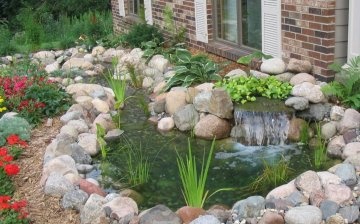
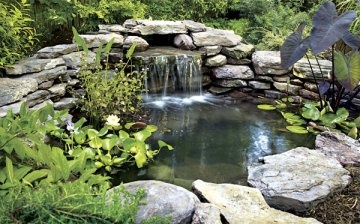
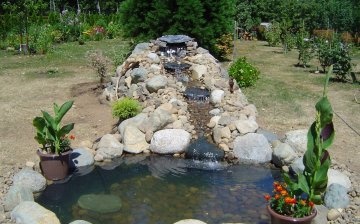
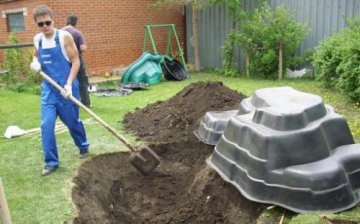
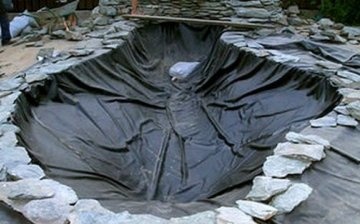
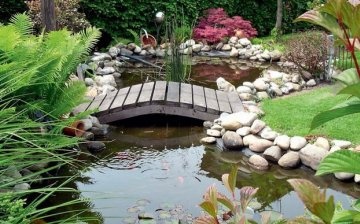
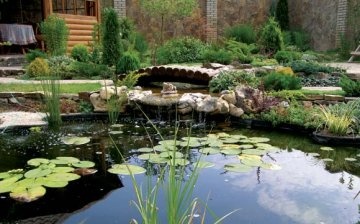









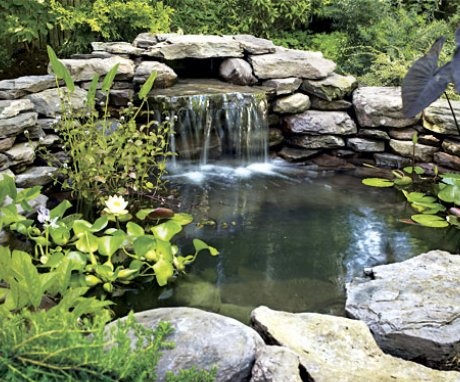
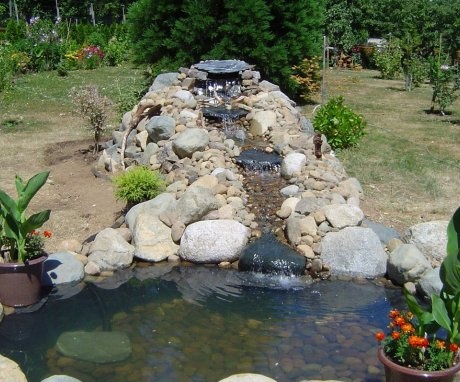
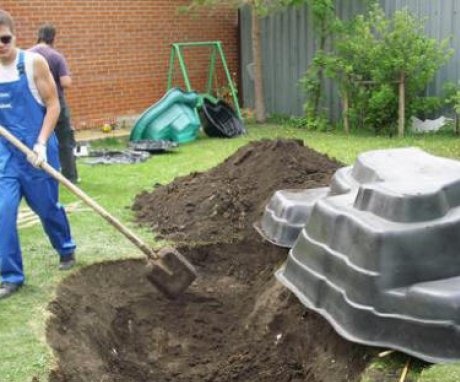
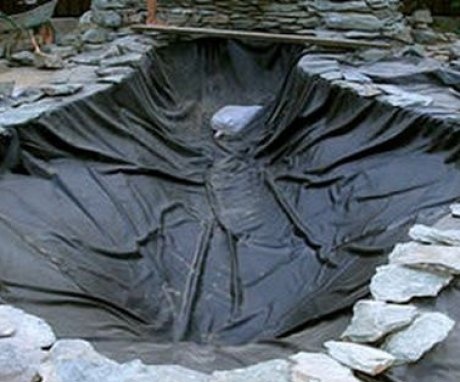

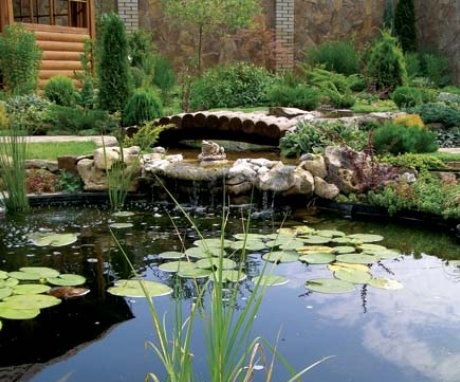
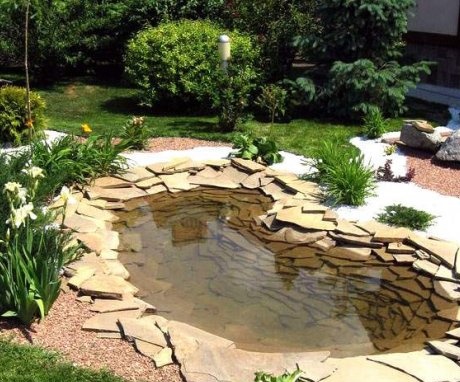
We dug a small pond, covered it with a film so that the water would not go away, poured it on the bottom of the sand, did not finish it until the end, until the stones were pressed down on the film, the rain had already passed and filled it with water, a week had passed and it "bloomed", which can be added in the water to plant a water lily, a water lily?
While the reservoir on the site is only in dreams, I am collecting information. I read, in principle, everything is not so scary, I can do a modest pond. You will have to tinker, of course, but it all looks so beautiful .. Probably, I will make up my mind this summer.